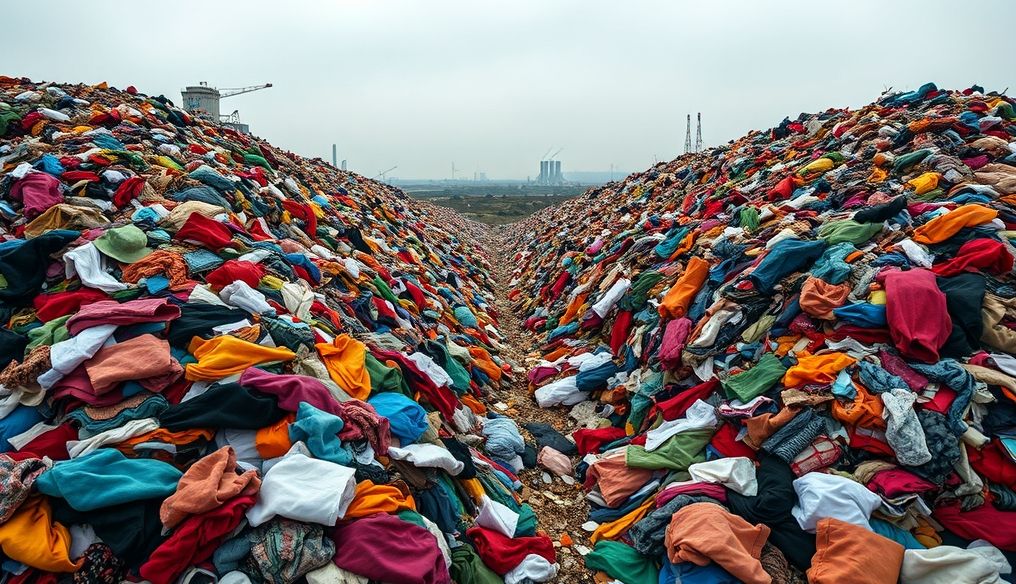Is Fast Fashion Killing Our Planet? Examining the High Environmental Costs
Fast fashion, with its constantly renewed collections and attractive prices, has become an integral part of our lives. But have we ever wondered about the true cost of these cheap clothes? This article reveals the devastating environmental impacts of this industry.
What is Fast Fashion?
Fast fashion is a business model based on producing trendy and cheap clothing in large quantities, and offering it to consumers at a very fast pace. This industry aims to satisfy the constant desire for the latest trends, leading to an accelerated consumption cycle.
Characteristics of Fast Fashion:
- Constantly renewed designs.
- Low prices.
- Low quality.
- Production in large quantities.
- Fast distribution.
Environmental Impacts of Fast Fashion
Fast fashion is one of the most polluting industries in the world. It causes serious damage from the production stage to the disposal of clothing.
1. Excessive Water Consumption
Clothing production requires huge amounts of water. For example, producing one cotton shirt requires about 2,700 liters of water, which is enough for one person to drink for two and a half years. Producing one pair of jeans consumes about 7,600 liters of water.
Cotton cultivation, the main raw material in the clothing industry, leads to the depletion of water resources and their pollution with pesticides and fertilizers.
2. Water Pollution with Chemicals
The textile industry uses large amounts of toxic chemicals in dyeing and finishing processes. These chemicals are discharged into rivers and seas, leading to water pollution and poisoning of living organisms.
It is estimated that the textile industry is responsible for about 20% of industrial water pollution in the world.
3. Greenhouse Gas Emissions
The fast fashion industry contributes to greenhouse gas emissions that cause climate change. These gases are emitted from the production, transportation, distribution, and disposal of clothing.
It is estimated that the fashion industry is responsible for about 10% of global carbon emissions, which is equivalent to the emissions of the aviation and shipping sectors combined.
4. Textile Waste
Fast fashion produces huge amounts of textile waste. Millions of tons of clothing are disposed of annually in landfills, where they decompose slowly and release harmful gases.
It is estimated that less than 1% of clothing is recycled into new clothing.
5. Soil Degradation
Intensive cotton cultivation leads to soil degradation and loss of fertility. The use of pesticides and chemical fertilizers leads to soil pollution and the destruction of microorganisms that play an important role in maintaining soil health.
6. Impact on Wildlife
Water pollution and soil degradation lead to the destruction of natural habitats and a negative impact on wildlife. Animals and plants are at risk of extinction due to environmental pollution with chemicals and textile waste.
Alternatives to Fast Fashion
To protect the environment, we must change our consumption habits and look for sustainable alternatives to fast fashion.
1. Buying Secondhand Clothing
Buying secondhand clothing is an environmentally friendly and economical option. You can find high-quality clothing at affordable prices in thrift stores and charity shops.
2. Choosing Clothing Made from Sustainable Materials
Look for clothing made from sustainable materials such as organic cotton, hemp, bamboo, and recycled linen.
3. Paying Attention to Clothing Quality
Invest in high-quality clothing that lasts longer. Avoid buying cheap clothes that break quickly.
4. Repairing Clothing
Learn how to repair clothing instead of throwing it away. You can easily repair holes and tears using a needle and thread.
5. Recycling Clothing
If you no longer want to wear your clothes, recycle them instead of throwing them away. You can donate them to charities or sell them online.
Conclusion
Fast fashion has a high environmental cost. By changing our consumption habits and supporting sustainable alternatives, we can contribute to protecting the environment and ensuring a better future for future generations.
Sources:




